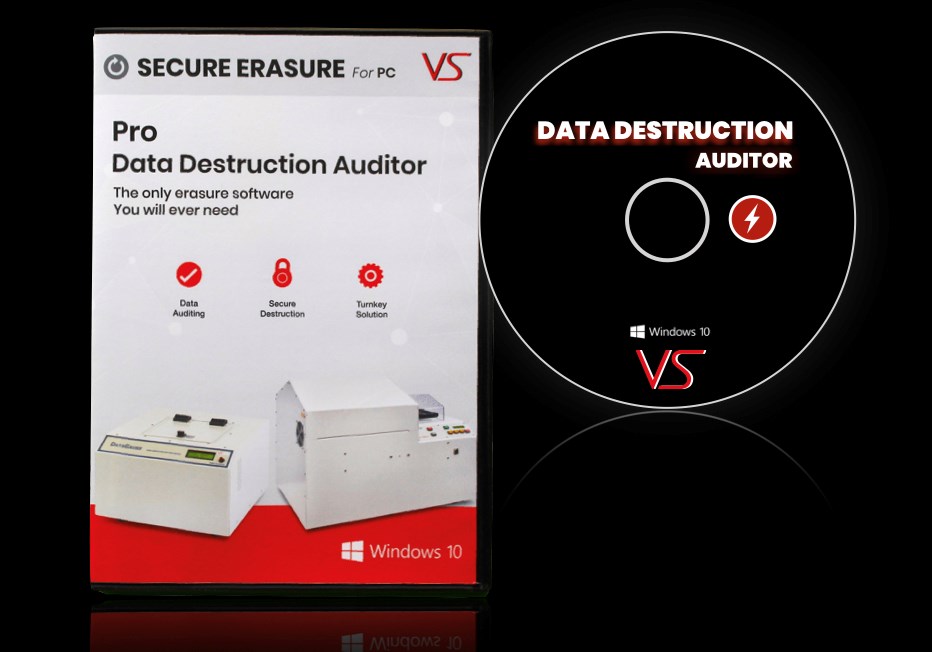The Important Nature of Information Damage in Upholding Computer System Protection Solutions and Protecting Versus Unauthorized Gain Access To
In an era where data breaches and identity burglary are increasingly widespread, the importance of efficient information destruction can not be overemphasized. Numerous approaches, from data cleaning to physical destruction, offer as crucial safeguards against unauthorized access.
Significance of Information Damage
In a progressively electronic world, the importance of information devastation can not be overemphasized. As companies accumulate huge quantities of sensitive info, the potential consequences of stopping working to effectively get rid of and handle of that data come to be significantly extreme. Information violations, identification burglary, and corporate reconnaissance pose significant dangers, emphasizing the requirement of effective data devastation practices.

Furthermore, as technology progresses, so also do the methods through which malicious actors look for to make use of sensitive information. Organizations needs to stay cautious and positive in their data destruction strategies to safeguard against these evolving hazards. By focusing on data destruction, companies not just shield their properties yet also foster trust fund among clients and stakeholders, showing a commitment to accountable data monitoring and safety and security methods.
Methods of Effective Data Damage
To make sure the irreparable and total damage of sensitive data, companies can use a range of reliable methods customized to their certain demands. Among the most typical techniques is data cleaning, which entails utilizing specialized software application to overwrite existing data several times, making recuperation virtually difficult. This is especially beneficial for solid-state drives and tough drives, where traditional deletion methods are poor.
One more effective strategy is degaussing, which uses solid electromagnetic fields to disrupt the magnetic domain names on storage space media, making the information irretrievable. This method is particularly matched for magnetic storage space devices, such as tape drives and hard disks.
Physical damage is additionally a feasible alternative, entailing the shredding, crushing, or incineration of storage space gadgets. This technique guarantees that data can not be recuperated, making it ideal for companies dealing with highly sensitive info.

Conformity With Data Protection Rules
Organizations must not just concentrate on efficient data damage methods however additionally ensure compliance with information protection policies that regulate just how delicate details is taken care of and thrown away. Following these guidelines is vital for preserving and guarding personal data client depend on. Rules such as the General Data Security Policy (GDPR) in the European Union and the Wellness Insurance Policy Transportability and Responsibility Act (HIPAA) in the United States impose rigorous standards on data monitoring, that include needs for the protected disposal of delicate details.
To achieve compliance, organizations must carry out extensive information destruction plans that align with these lawful frameworks. This includes determining information that calls for devastation, establishing protocols for safe and secure methodsâEUR" such as shredding physical media or using software program that satisfies sector requirements for information wipingâEUR" and preserving in-depth documents of damage tasks. Normal audits must be conducted to ensure adherence to these policies and to determine any type of potential areas for improvement.
Failing to follow data defense guidelines can lead to substantial lawful implications, including large penalties and damage to an organization's track record. Integrating compliance right into data damage techniques is not just a lawful obligation however also a critical part of a durable details security strategy.
Effects of Poor Information Handling
Poor information handling can bring about extreme consequences that expand beyond prompt operational setbacks. Organizations may deal with considerable financial losses due to information violations, which often result in costly removal initiatives, lawful costs, and governing fines. These monetary implications can stress resources and impede development, ultimately impacting a company's profits.
In addition, poor data handling can seriously harm an organization's reputation. Consumers, partners, and stakeholders may shed count on an entity that you could try here fails to shield delicate information, leading to decreased client commitment and potential loss of company opportunities. This disintegration of count on can take years to reconstruct, if it can be brought back in any way.
In addition, companies might deal with legal implications emerging from non-compliance with data security regulations. Such offenses might result in charges and examinations, intensifying the economic concern and more tarnishing the company's picture.
In the realm of cybersecurity, insufficient information monitoring practices can develop susceptabilities that make systems extra susceptible to unauthorized accessibility and cyberattacks. Inevitably, these effects highlight the important importance of implementing robust data dealing with procedures to protect delicate info resource and maintain organizational stability.
Best Practices for Secure Information Disposal


First of all, data ought to be identified according to its level of sensitivity. Delicate info requires more rigorous disposal approaches, such as shredding physical documents and utilizing advanced software program for digital information wiping. Employing licensed data destruction services makes certain compliance with sector laws and standards.
Second of all, organizations should implement an information disposal policy that mandates normal audits. This plan ought to outline the procedures for information retention and destruction, making sure that out-of-date information is gotten rid of quickly and safely. Training workers on these procedures is necessary to promoting a culture of safety recognition.
Lastly, preserving thorough records of disposed information improves responsibility and offers a clear audit route. This documentation needs to consist of the kind of information ruined, the technique utilized, and the date of disposal.
Verdict
To conclude, the critical of effective information devastation is apparent in its function in enhancing computer protection services and reducing unauthorized accessibility dangers. Adopting durable methods such as data wiping, degaussing, and physical damage, along my sources with conformity with regulations like GDPR and HIPAA, is important for guarding delicate information. Disregarding appropriate information disposal practices can result in extreme effects, including data breaches and legal consequences. Executing ideal practices in secure information disposal inevitably fortifies business stability and client count on.
In a period where information violations and identity theft are significantly common, the value of efficient information destruction can not be overemphasized. data destruction. Data violations, identity burglary, and corporate espionage posture significant dangers, underscoring the need of efficient data damage techniques
Compliance with policies such as GDPR and HIPAA requireds that organizations implement strict data defense steps, consisting of the safe damage of data at the end of its lifecycle.
By prioritizing data devastation, companies not just secure their properties however additionally foster depend on amongst stakeholders and customers, demonstrating a dedication to liable data administration and safety and security methods.
Organizations need to not only focus on efficient data devastation approaches but also make sure conformity with data defense regulations that regulate exactly how sensitive details is taken care of and disposed of.